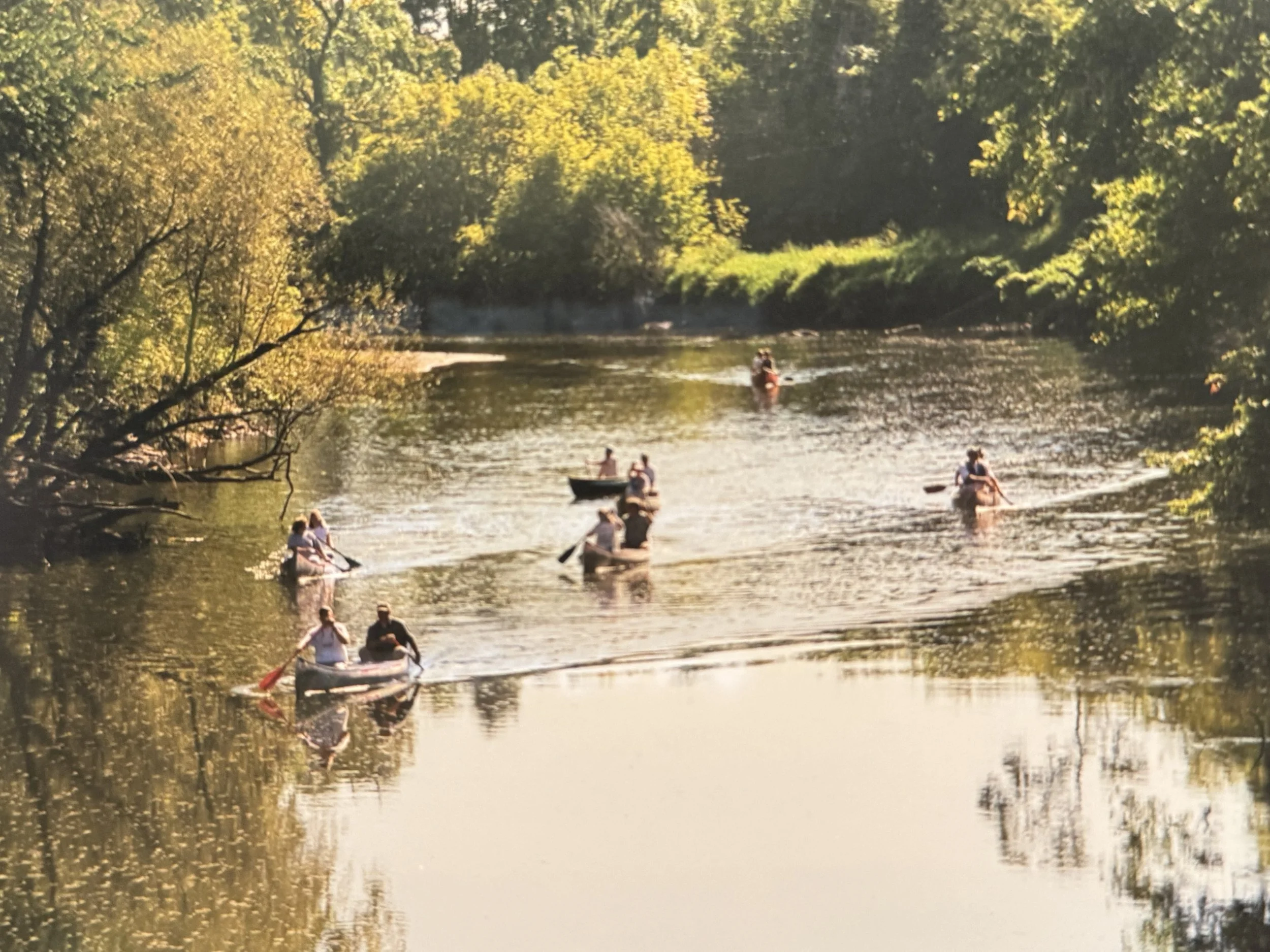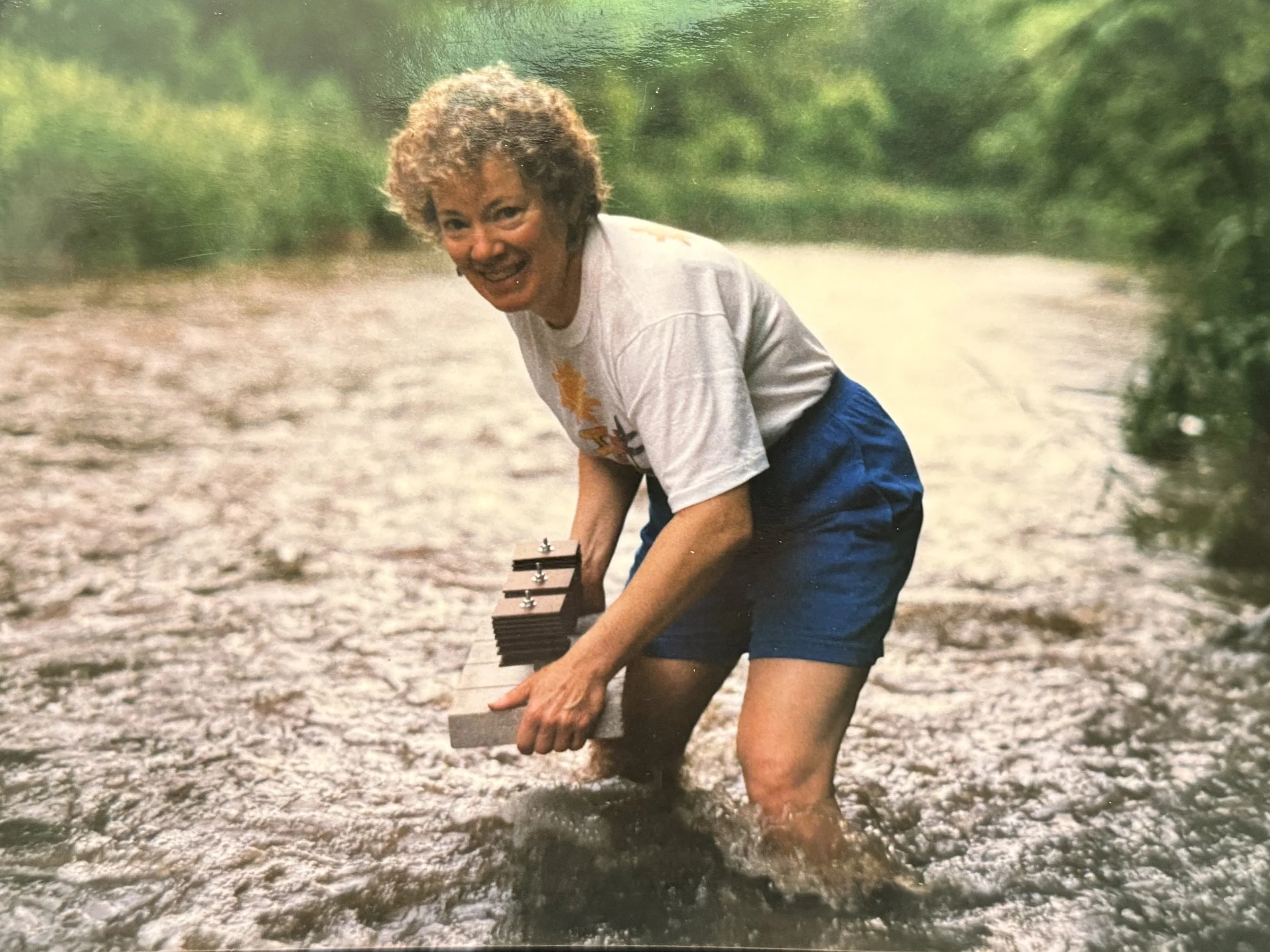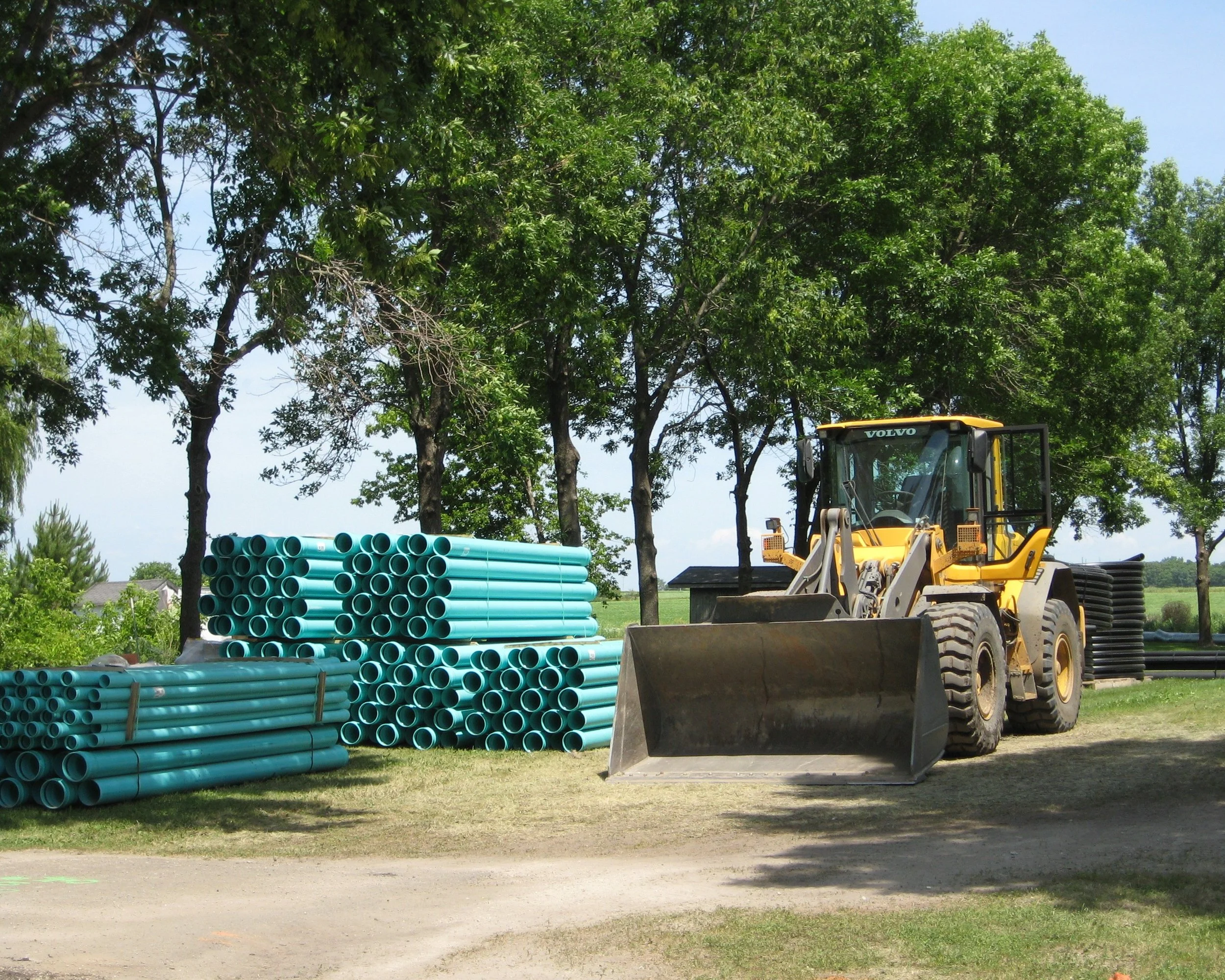35 Years of Clean River Partners
This year marks Clean River Partners' 35th anniversary. Our mission has been clear since the beginning: to protect and enhance the waters of the Cannon River Watershed.
We continue this important work by connecting, supporting, and providing opportunities for residents, farmers, and landowners to directly experience the land and water of the Cannon River Watershed while making conscious choices that support it.
We couldn’t (and wouldn’t want to) do this work without you. In honor of this milestone, we invite you to read about our journey, from our founding to where we are today. We’ll be releasing five years of history each month of this year!
Part One: Our History from 1990 - 1994
Between 1990 and 1994, the Cannon River Watershed Partnership (our name until 2021) was off to an exciting start! Founded by Molly Woehrlin in the spring of 1990, with the help of partners like The Nature Conservancy, the Minnesota Department of Natural Resources, and the Board of Water and Soil Resources, our mission was clear: to protect and enhance the waters of the Cannon River Watershed.
We began with just a part-time Executive Director, but it didn’t take long for our team to grow to three dedicated staff members. They worked hard to connect with the community through public meetings, gather input, and create a solid long-term watershed plan. Thanks to generous support from the McKnight Foundation and the Legislative Commission on Minnesota Resources (LCMR)*, we focused on developing leadership and providing incentives to encourage the best management practices among our community.
*Note: Formerly known as the Legislative Commission on Minnesota Resources (LCMR), the Commission was re-organized into the LCCMR in 2006 with the addition of members of the public to provide citizen input more directly in the decision-making process.
CRWP co-sponsored a kayak trip down the Cannon River with Red Wing Environmental Learning Center. Molly Woehrlin is on the right with a group of kayakers. June 1992.
During these early years, our board included county commissioners from six different counties in our watershed (Dakota, Goodhue, Le Sueur, Rice, Steele, and Waseca) along with representatives from Soil and Water Conservation Districts. This diverse group was fantastic for building partnerships with government agencies, although managing such a large team certainly had challenges!
One of the highlights of this period was the launch of our Adopt-A-River program. It encouraged residents to take pride in keeping their designated stretches of the river and shorelines clean and safe while also monitoring for issues like erosion and dump sites. This initiative embodied our vision of fostering local action, ownership, and stewardship.
In June 1992, we cleaned up 100 miles on the Cannon from the source to the mouth, involving over 100 volunteers in 20 different organizations. All in all, these early years set an excellent foundation for CRWP’s efforts in conservation and community engagement!
Part Two: Our History from 1995 - 1999
Between 1995 and 1999, the Cannon River Watershed Partnership (CRWP) saw a lot of positive changes. We received a large grant from the LMCR, which helped us launch projects in three main areas: the Little Cannon River, Prairie Creek, and what former employees call the “three lakes basin,” which includes Fox, Circle, and Mazaska Lakes. Each of these areas had significant environmental problems, but there was a lot of community interest in making things better. One notable event was a big tire cleanup at Fox Lake, where volunteers worked together to remove around 500 tires from the water.
During this period, CRWP hosted the first Cannon River Summit, an event that brought together local citizens, agency staff, and elected officials. The summit focused on educating attendees about resources and funding available for protecting nature. At that same time, Dakota County was working on creating the Miesville Ravine Park Reserve, and a new organization called Friends of the Cannon River Wilderness Area was formed to help maintain and improve another park 30 miles down the road.
In the summer of 1997, CRWP began sharing important information about new sewer projects in Dundas and Welch, which were designed to stop raw sewage from entering the Cannon River. As community members faced issues with pollution from feedlots and land use, they increasingly turned to CRWP for support. During this time, CRWP introduced a new logo and launched a campaign called “Be a River Friendly Neighbor” to encourage everyone to take responsibility for protecting local waters.
In 1998, CRWP launched its first website, created by a student from Carleton College. A group of 14 landowners and experts came together to create a plan for protecting Spring Brook, a stream that is home to native brook trout. Researchers gathered at a conference to discuss pollution in the watershed, identifying sediment, excess nutrients, and bacteria as major problems.
Finally, in 1999, the Minnesota Legislature passed a law that provided funding for CRWP to help form a joint powers agreement among six counties in the region: Dakota, Goodhue, Le Sueur, Rice, Steele, and Waseca. The goal of this agreement was to create a land-use plan to help protect the area’s water resources.
Part Three: Our History from 2000-2004
The year 2000 marked a significant milestone for the Cannon River Watershed Partnership, as we celebrated our 10th anniversary. At that time, we organized a community paddle on the Cannon River, starting from the Cannon River Wilderness Area and concluding in Dundas. This event not only commemorated our decade of work but also established a tradition of using canoe trips as a means of outreach, fostering community connection to the watershed. In the same period, after a decade in Faribault, we made the strategic decision to move our office to Northfield, positioning ourselves closer to the heart of our watershed activities.
During these early years, the focus on environmental protection intensified, particularly in terms of water quality management across the watershed. A major topic of concern was the development of Total Maximum Daily Load (TMDL) plans, which are critical for identifying the maximum amount of pollution that water bodies can absorb without violating regulatory standards. High levels of phosphorus in Lake Byllesby and fecal coliform bacteria in the Straight River raised alarms among scientists and citizens alike. In response, we launched the Citizens' Monitoring Program, which equipped and trained volunteers to collect crucial water quality data across various sites, including the Straight River, Cannon River, Prairie Creek, and more. For many of these locations, the data gathered represented the first-ever records of water quality, highlighting the significance of community involvement in environmental monitoring.
In this period, we also celebrated significant conservation milestones, including the protection of the Chub Lake Wildlife Management Area and the Cannon River Aquatic Management Area. The Chub Lake WMA spans 192 acres, featuring oak woodlands, fields, grasslands, and a portion of Chub Lake. Meanwhile, the Cannon River AMA covers 200 acres and includes a mile of river near Waterville, showcasing a shift in focus towards conserving native aquatic and riparian habitats—an evolving perspective in conservation practices during the early 21st century.
Between 2002 and 2004, our organization took a reflective approach, refining our strategic priorities under three main themes: outreach, conservation, and monitoring. Outreach played a crucial role in educating the public about the watershed's value and the importance of community involvement in its stewardship. Our conservation programs aimed to enhance and protect surface and groundwater resources, while monitoring efforts became crucial for gathering reliable, scientifically based information on water quality.
This period also marked the beginning of conversations around urban stormwater management, as we recognized the increasing challenges posed by urbanization. We initiated the establishment of monitoring sites in areas characterized by impervious surfaces to better understand the effects of limited green space and high-maintenance lawns on water quality—an essential step in adapting to the changing environmental landscape and addressing the needs of our watershed during this transformative time.
Part Four: Our History from 2005-2009
During this exciting period, two standout projects made a significant impact: the Southeast Minnesota Wastewater Initiative and our very first Cannon River Watershed-Wide Cleanup.
In April 2006, we kicked off our inaugural Cannon River Watershed-Wide Cleanup, an event that united over 200 enthusiastic volunteers across 10 different sites in the watershed. Together, they rolled up their sleeves and tackled the challenge, removing thousands of pounds of garbage, debris, and even tires from the Straight and Cannon Rivers, as well as from Shields Lake. The Cannon River Beacon captured the spirit of the event perfectly, noting that volunteers in Red Wing “dug, tugged, and hauled away more than ten automobiles, seven refrigerators, several stoves, and many tires.” It was a true community effort that showcased the power of teamwork and dedication to our natural resources!
Another remarkable initiative from this era was the Southeast Minnesota Wastewater Initiative (SMWI). This groundbreaking project aimed to assist small, unsewered communities in enhancing their sewage treatment systems through a dynamic, three-pronged approach that included facilitator support, community education, and cost-share funding. With the help of TMDL research and implementation funding, this initiative became vital in addressing a pressing issue: many streams in southeast Minnesota were plagued by unsafe levels of E. coli and fecal coliform bacteria, rendering them unsuitable for swimming and human contact. By tackling untreated sewage—one of the major culprits behind this contamination—we began to protect our precious local waterways.
Between 2005 and 2008, two towns in Steele County, Hope and Meriden, emerged as shining examples of success under the SMWI. Thanks to the dedicated support from the Cannon River Watershed Partnership (CRWP), these communities finally found viable solutions for their wastewater challenges. In a monumental achievement, they sealed the straight pipes that had been discharging untreated sewage into the Straight River and Crain Creek. This significant accomplishment prevented an estimated 44,000 gallons of raw sewage from contaminating these surface waters and, ultimately, the Cannon River every single day. It’s a transformation that highlights how collaborative efforts can lead to lasting change for our environment!
Stay Tuned! We’ll dive into the time period between 2010 and 2014 soon!
Join us in celebrating 35 years of Clean River Partners!
In honor of this milestone, we invite you to make a bonus gift of $35 to help us continue our mission and make an even bigger impact together!










